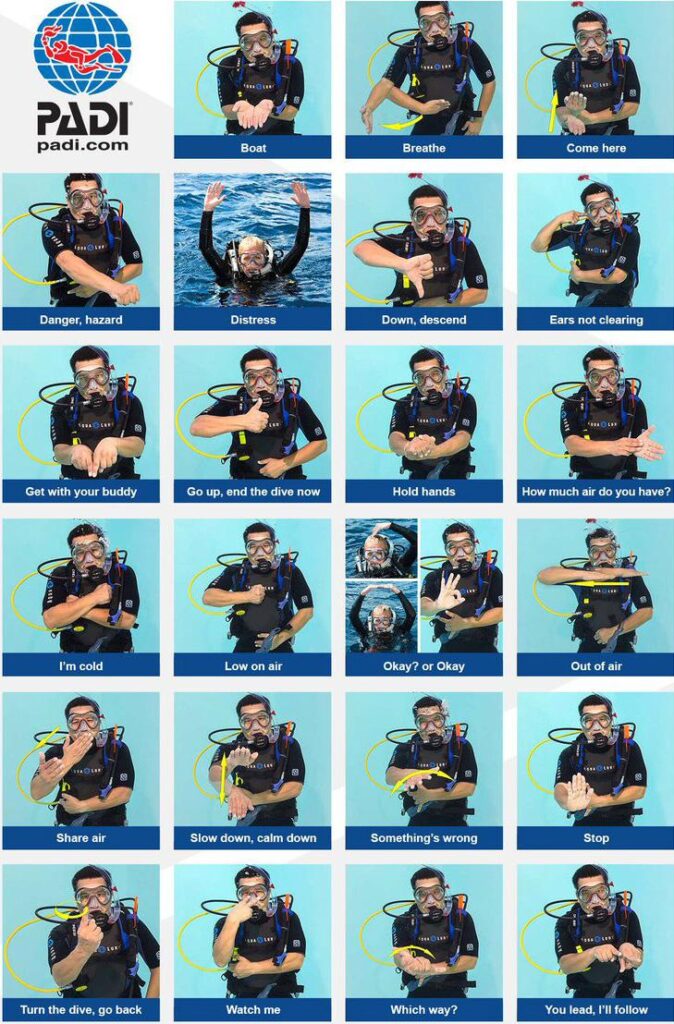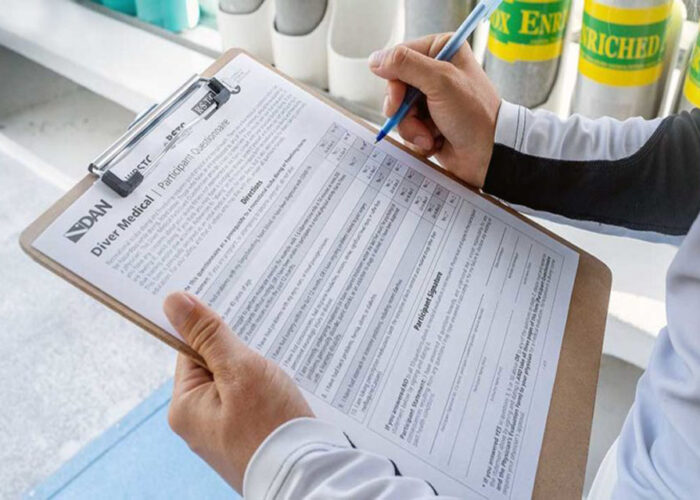The Essential Hand Signs Every Diver Must Know :
Communication is key—especially underwater, where words aren’t an option. Whether you’re exploring the reefs of Hurghada’s Red Sea or diving in tropical waters elsewhere, knowing the standard diving signals keeps you and your dive buddy safe.
In this guide, we’ll cover the most important scuba diving hand signals, how to use them, and why they matter on every dive.
Why Are Diving Signals Important?
Unlike on land, you can’t rely on talking or shouting underwater. That’s why standardized hand signals are used to:
- Communicate clearly with your dive buddy or instructor
- Prevent accidents and misunderstandings
- Share important information instantly
- Enhance your overall safety and dive experience
These signals are universally understood by certified divers worldwide, especially in popular diving destinations like Hurghada, Sharm El-Sheikh, and beyond.
Essential Diving Signals You Must Know
1. 👌 OK Signal
- How: Form a circle with your thumb and index finger while keeping the other fingers extended.
- Use it for: “I’m okay” or to ask “Are you okay?”
- Common mistake: Don’t confuse it with the thumbs-up gesture!
2. 👎 Up / Ascend
- How: Give a thumbs-up.
- Use it for: Telling your buddy you want to ascend or end the dive.
- Important: This is not the “OK” signal—avoid confusion.
3. 👈👉 Direction Signals
- Pointing in a direction tells your buddy where to go, turn, or look.
4. ✋ Stop
- How: Hold your hand up with fingers extended, palm facing outward.
- Use it for: Telling your buddy to stop moving or wait.
5. ✊ Low on Air
- How: Place a clenched fist over your chest.
- Use it for: Indicating you’re low on air and need to ascend or switch tanks.
6. ✋✋ (Tapping Chest Twice) Out of Air
- How: Move a flat hand repeatedly back and forth across your throat.
- Use it for: Emergency – you’re out of air and need help immediately.
7. 🤙 Something’s Wrong
- How: Wiggle your hand side to side with fingers extended and palm down.
- Use it for: Indicating discomfort, gear issues, or any other problem.
8. 👌↕️ Safety Stop
- How: Show the “OK” sign followed by holding up three fingers.
- Use it for: Indicating a 3-minute safety stop at 5 meters (15 feet).
Tips for Using Diving Signals Effectively
- Make eye contact before signaling
- Be clear and deliberate with your hand movements
- Practice signals with your buddy before the dive
- Use a dive torch or slate in low visibility
- Review your signals during your pre-dive safety check
Learn Diving Signals with a Pro
If you’re new to diving or want a refresher, enroll in a scuba course in Hurghada where instructors cover all standard hand signals in detail. Most dive centers, including ours, ensure that you’re confident in communication before entering the water.
Final Thoughts
Mastering diving hand signals is just as important as learning to control your buoyancy or check your air supply. They keep dives smooth, safe, and enjoyable. Whether you’re descending into coral canyons or exploring a shipwreck, good underwater communication will make your dives better—and safer.



